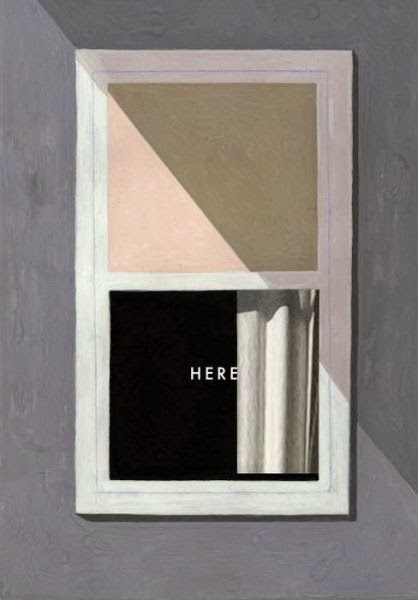In 1989, Richard McGuire showed us otherwise, with a six-page story called "Here" in the first trade paperback issue of the influential anthology RAW. [1] That story showed the corner of a room: each page had a six-panel grid, and each panel was locked down to the same view of that room. But, within that view, other panels popped, to show different times in the same place -- sometimes in close succession, like one panel showing a woman cleaning the room in four consecutive years, but sometimes only connected by theme or concept. The house was built in 1902 and burned down in 2029, but the panels ranged further in time than that, before and after the house even existed. McGuire's art was more workmanlike than evocative, but the concept was electric: comics could radically change their viewpoint and still be recognizable comics; they could use place to unify a story rather than character or time.
Twenty-five years later, McGuire took the same concept and blew it up to book length. Here
The book Here gives McGuire the scope to explore the concept he could only sketch in the original story: he has space here to give us snapshots of two centuries of this house's existence, and of events before and after that, from dinosaurian prehistory to an equally lush post-history hundreds of thousands of years in the future. We learn a few names, but we recognize characters mostly from there years -- we see five children grow up through the '50s to the '70s, and see them and their parents across four decades. We see others in moments: two local Amerindians in courtship in 1609, Ben Franklin visiting his son's house in 1775, other families that live in the house in the 1990s and 2000s, a painter and his girlfriend on the grass in 1870.
The exact details are different -- in Here, the house was built in 1907 and flooded in 2111, spending most of the next century underwater -- but the style and the method of making connections is the same as in "Here," only refined and expanded into something magnificent and wondrous. It's rare to be able to honestly say so, but Here is a unique book, one that tells its stories in a way no one else has and that makes connections in ways unexpected and fascinating.
Here is a magnificent achievement that stands entirely alone; Richard McGuire has turned everything we thought we knew about comics sideways and made great art in the process.
[1] The original story is available online; I believe with the author's permission.
Book-A-Day 2014 Introduction and Index

No comments:
Post a Comment